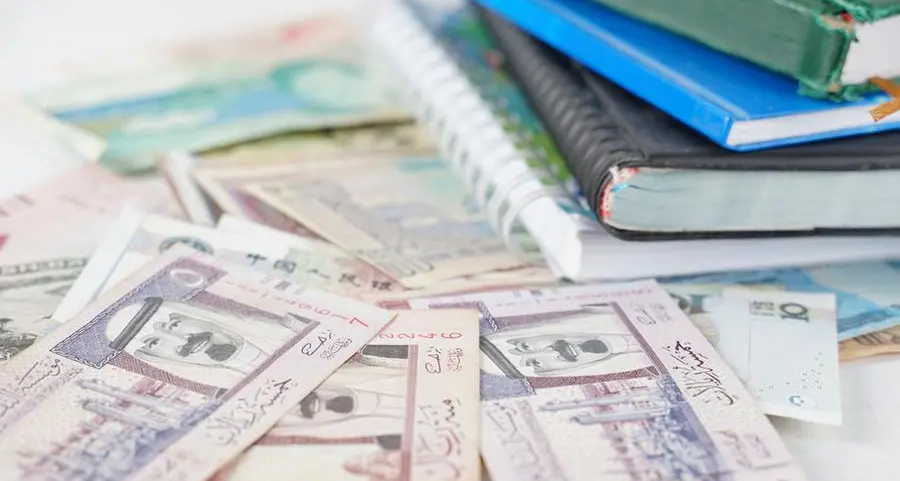PHOTO
A fishing boat passes in front of the Kuwait City skyline. Stephanie McGehee, Reuters. Image used for illustrative purpose.
Despite political turmoil and inflationary pressures, the Kuwaiti banking sector is recovering and the acquisition of Ahli United Bank – Bahrain by the Kuwait Finance House (KFH), which was approved late last July, is among the indications that banks are looking to grow by all means such as acquisitions, after the recession caused by Covid-19 crisis, reports Al-Rai daily quoting the MEED magazine.
The net profits of banks — excluding the profits of the Commercial Bank– rose for the second consecutive quarter in 2022, increasing by about 3.4 percent on a quarterly basis to reach $1.7 billion, according to the magazine report, noting that the growth in profits was broad-based, since seven out if the nine banks recorded the highest profits during the last quarter. Junaid Ansari, head of investment strategy and research at Kamco Invest, said, “The profit growth reflects an increase in total bank revenues by 2.7 percent during the quarter to $2.4 billion. Revenue growth was led by an increase in both interest and non-interest income.
Expenses
On the expense side, Al-Ansari explained that almost all banks recorded an increase in operating expenses during the second quarter, with a total growth of 25.2%. However, he indicated, this was partially offset by one of the largest quarterly decreases in provisions, and the overall loan loss portfolios that decreased more than half to $193.7 million during the second quarter. For its part, rating agencies are widely optimistic about the prospects for the local banking sector, as Moody’s, which gave the Kuwaiti banking system a stable outlook in April of this year, expects the non-oil economy to continue to recover. Moody’s believes that the quality of loans will remain healthy as companies and families return to their usual activities after the pandemic.
While Kuwaiti banks’ huge exposure to the real estate sector poses risks — not least what MEED reports earlier this year suggested about the potential for a double-digit drop in real estate prices in 2022 — ample reserves of provisions and strong capital are available. Moody’s believes that banks will continue to be financed by deposits, mostly through low-cost deposits, as customer deposits accounted for more than two-thirds of all obligations as in December 2021, indicating that non-performing loans in Kuwaiti banks were at 1.6 percent in 2021, lower than its level in 2020, which amounted to 2.2 percent, and that the country’s loan repayment deferral programs in 2021 ended without any significant impact on the quality of bank loans. However, all Gulf banks — with the exception of Kuwaiti banks — during the first quarter of this year showed a strong decline in the levels of provisions compared to the previous year, as Kuwait emerged in the face of this trend, but Ansari says that this should not be a source of undue concern.
He added: “We noticed that provisioning in the GCC was just a matter of timing and was largely standard across countries in the region. Reserved provisions from Kuwaiti banks remained stable during the first quarter of 2022, but declined sharply in the second quarter of the year. MEED indicated that there were also concerns that the profit levels of Kuwaiti banks appear to be lower than their counterparts in the Gulf Cooperation Council countries, as evidenced by the relatively low rate of return on equity in recent months, attributing this to the low ratio of loans to deposits in Kuwaiti banks to about 75 percent, compared to the average of nearly 80 percent of Gulf banks.
MEED pointed out that the relatively high cost-to-income ratio in Kuwait, which amounted to about 44.2 percent, compared to the average of 39.7 percent for Gulf banks, contributed to the decline in profitability. However, the magazine confirmed that the country’s largest banks in terms of assets showed a strong performance in net income this year, as the National Bank of Kuwait announced a 58.6 percent increase in its net profit for the second quarter compared to the same period last year which was $395.3 million. He pointed out that there are some areas in which Kuwaiti banks show better measures than their peers in the Gulf states, such as handling bad loans.
“Kuwaiti banks have a cleaner loan portfolio on their books, and non-performing loans are at 1.6 percent compared to an average of 4 percent for Gulf banks, and this can be attributed to the conservative approach to lending by banks in the country.” Moreover Ansari said, the lending capacity of local banks remains strong with a strong balance sheet, with total assets of $326.8 billion at the end of the first quarter of 2022.” MEED noted the good reputation of the Central Bank of Kuwait in the strict application of Basel III capital standards, which helped banks build strong capital reserves, pointing out that the normal tangible equity of the Kuwaiti banking system amounted to about 13% of the weighted assets . risk at the end of 2021. According to Moody’s, the solvency of Kuwaiti banks was strengthened by good reserves, which amounted to 270 percent of non-performing loans as of December 2021.
Offer
MEED stated that KFH’s recent announcement of its intention to submit an offer to acquire up to 100% of Al Ahli United through a share swap is an indication of the ambitions of some Kuwaiti banks to enhance their growth. The agency explained that, according to Fitch, the acquisition of Al Ahli United would make KFH the second largest Islamic bank in the world in terms of assets after Al Rajhi Bank, and would significantly enhance KFH’s share of assets in the local market in Kuwait, which will rise from 22 percent to 28 percent.
MEED indicated that Kuwaiti banks can expect the continued improvement in key financial indicators they will witness in the second quarter, with more hope in 2023. Ansari believes that the increasing competition is the main challenge for banks in the region as well as Kuwait, especially from digital banks, as this has led to mergers in the sector, and the past few years have witnessed a number of acquisitions and mergers deals. The ambition of Kuwaiti banks to expand in the region also opens up another challenge in the form of currency risks, as the recent depreciation of the Egyptian pound and the Turkish lira is a potential warning of problems that may affect banks operating in Egypt and Turkey.
© 2022 Arab Times Kuwait English Daily. All Rights Reserved. Provided by SyndiGate Media Inc. (Syndigate.info).























